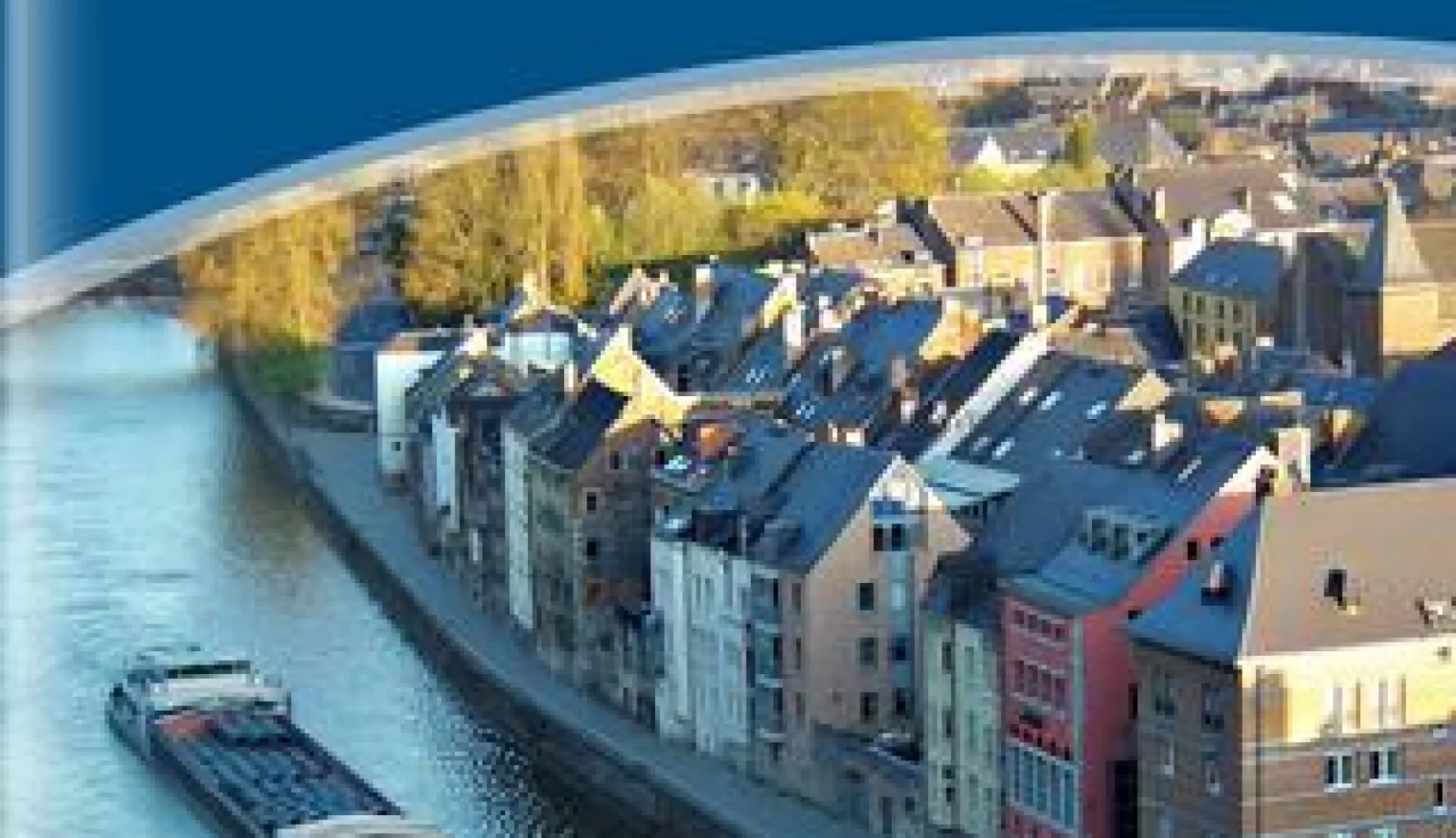The Port of Namur is successfully implementing a change in mindset to businesses across Wallonia, looking to diversify its portfolio in order to adapt to the changing market requirements.
TO MOVE MOUNTAINS
In its 40th year of operations, Port of Namur is a fully-fledged success in the Walloon region and further afield as an independent public company.
The Port is not what you would typically expect when you hear its name, based away from the typical seaside expanse, it is located on the Rivers Meuse and Sambre in the south of Belgium.
At present the Port manages 160 hectares of land spread along both rivers, mainly owned by the Region.
“Our prime goal is to promote river transportation for companies,” Dominique de Paul de Barchifontaine, Director of the Port of Namur explains. “Approximately 98 percent of the land that we manage is bound to welcome industrial activities, therefore we are able to step in and place industries or companies on it.
“We provide a hybrid-model service as we are required to abide by a selection of public rules and legislations whilst adopting private sector business practices. However, we are not operating under an administrative structure, we are a Company of public interest, managing estate located along our rivers in a way comparable to an SME.”
“We have a public company structure and a management contract with the Walloon Region, defining our business’ structure and mission for a period of five years. This is quite common in our country, for example with the Belgian railways or other inland ports.”
MARKET STABILITY
There are four ports located in Wallonia, all of which are independent companies with similar structures, missions and objectives.
“When it comes to sourcing the right company for a plot of land, we aim to settle a long-term basis contract,” adds de Paul. “This provides us with stability and the new business a chance to build or extend its activities and portfolio.
We are able to provide them with access to the river and the support they require to get themselves up and running.
“The company we award the contract to is not chosen on the basis of the price they can offer. All of our rates are predefined by the law and subsequently we are unable to place companies in competition with each other for a plot. This enables us to work in the public interest for those that will get the best possible use out of the land we have available.
“We have a fixed fee based on complex calculations that take into account the size of the plot, the length of the dock or the provided infrastructure.
“We will also look into the total tonnage possibly achieved for a piece of land. That defines a minimum tonnage which the company will have to pay, every additional ton being priced at a decreasing rate.”
The Port of Namur is trying to steer companies towards the rivers and away from the road as much as possible. Through this ‘penalty’ the Company hopes to achieve that target as it is a far cheaper and more efficient means of transportation.
de Paul adds: “The competitive element for all parties involved is far softer and it comes down to the quality of each project, including future prospects, employment and any opportunity created for the local area and the Region.”
NEW PROJECTS
When it comes to the Company’s estate portfolio, it is relatively stunted by the fact it doesn’t offer a lot of opportunities for extension, as de Paul explains: “Land is a scarce resource and citizens, communities, cities are more and more environment conscious, which is a good thing as it forces projects to be thought differently than in the past.”
“Although lack of extension posed an issue initially, we have taken this knowledge on board as a challenge,” de Paul describes. “Now we use this as an opportunity for reinvention, looking into the requirements of the market so that we can offer them the most attractive pitch possible that will serve both the business and the community.
“At present we are looking into a new project in the ship building business, working with a company that specialises in barges for river transport and river cruises. It is work like this that we are looking to expand into and that is providing us with a new facet within our product portfolio.”
Alongside searching for new business avenues, the Company also hopes to achieve a shift from working predominantly in bulk management, to value-added logistics that involves not only managing bulk but also the transportation of a wider range of goods with various packaging solutions such as big bags and containers.
INNOVATIVE SPIRIT
At present the transportation market is experiencing a shift in paradigm and pace, and soon it is expected and hoped that there will be a vast transfer from the leading road transportation onto a structured combination of railway and rivers.
“Our line of work is extremely practical, and we still have some industries with access to the river that are not utilising it,” de Paul adds. “We try to help them understand how they could gain more out of using the river as a transportation stream, changing their logistics’ chain and the way that they carry out their business.”
“Changing the way people think is increasingly difficult, which we have discovered recently when working with a wood-chip company from Ghent. Although they could transport their products more efficiently via water, chartering a barge to do so is not their top priority at present. We need to change this way of thinking so that very soon it will be a top priority for companies across the country.”
The Port of Namur has an innovative spirit that will serve it well moving forward, taking its private company management spirit to the public and greater good of the Region.
de Paul concludes: “I hope that as we continue to grow as a business, we will successfully add more diversification to our portfolio, working together with companies as a logistics’ partner to produce the most fruitful outcome for all, placing emphasis on the road to river switch.”


































